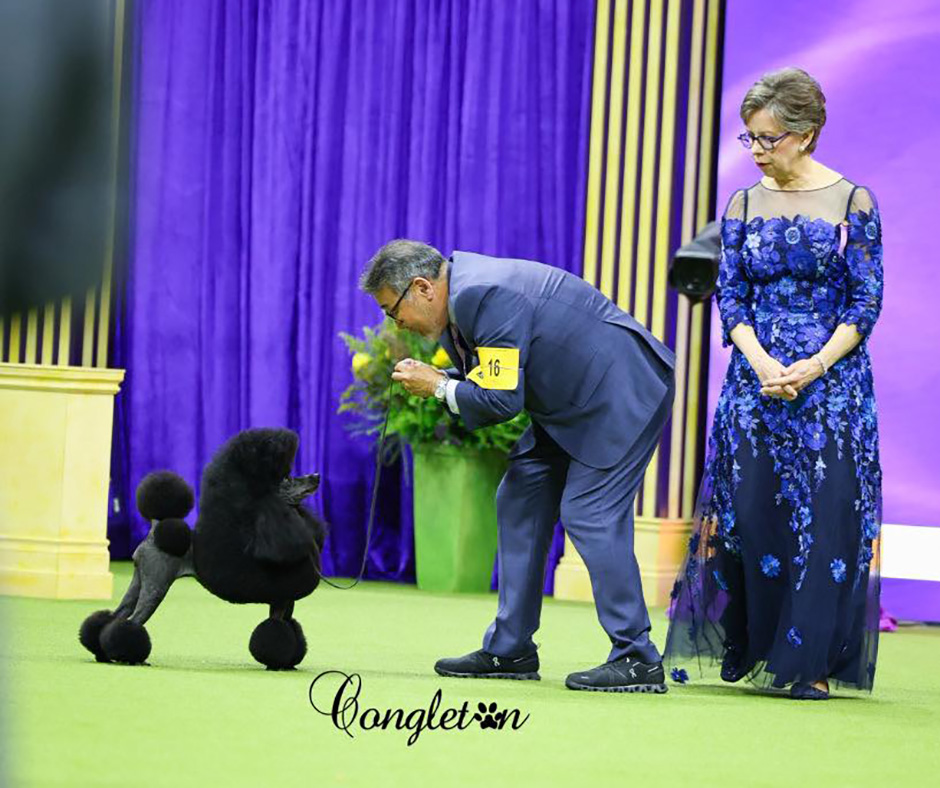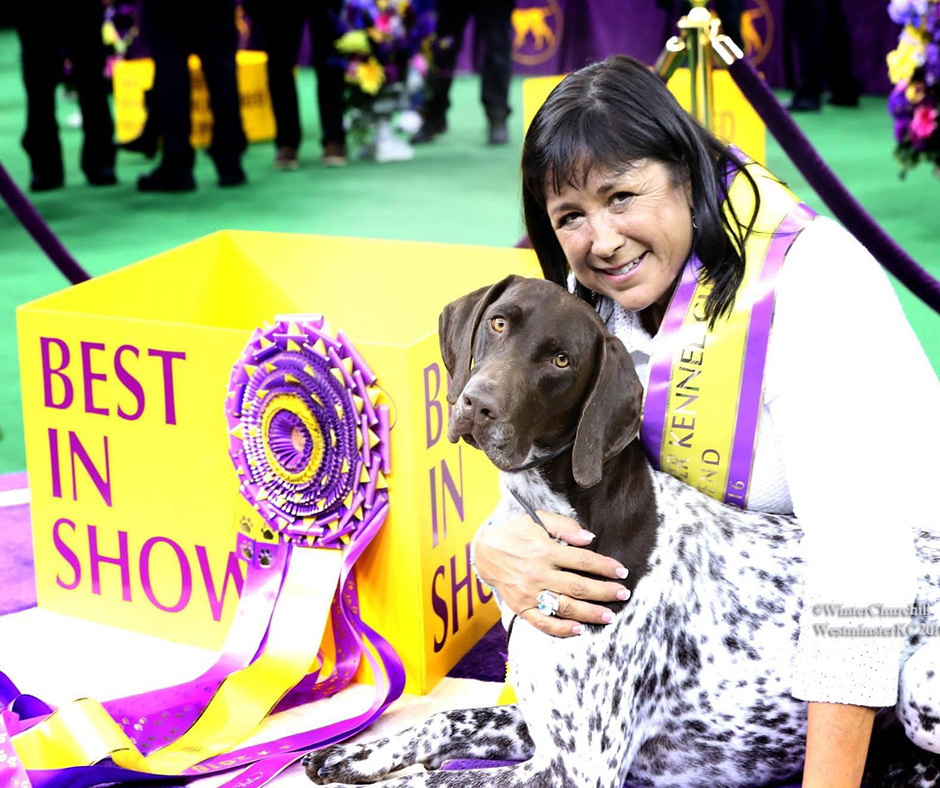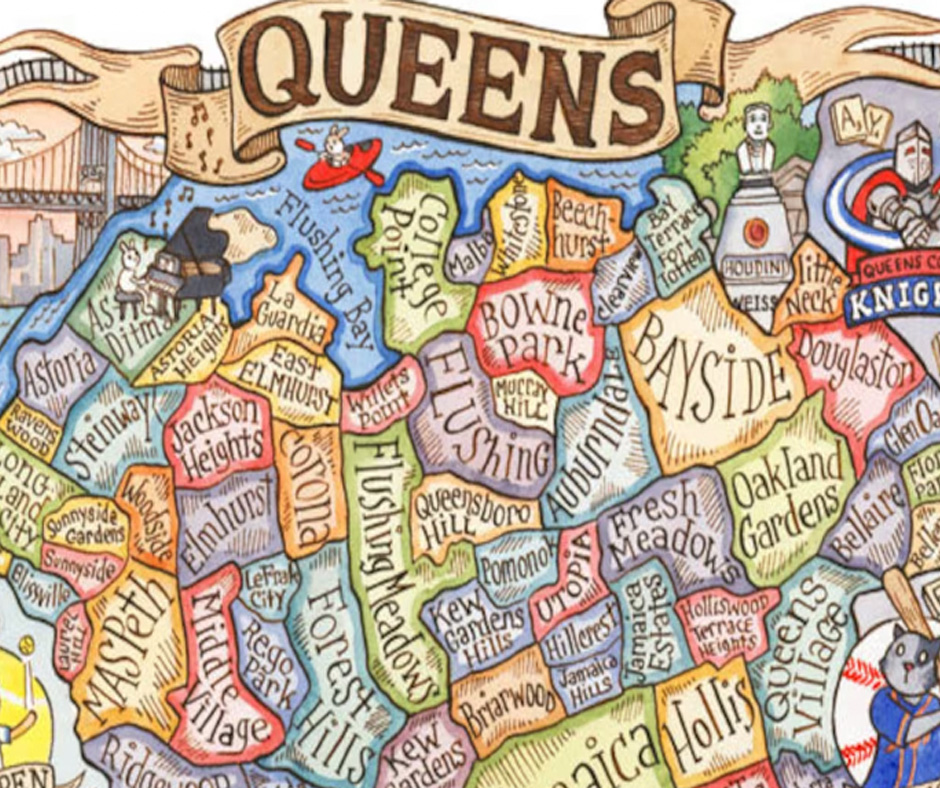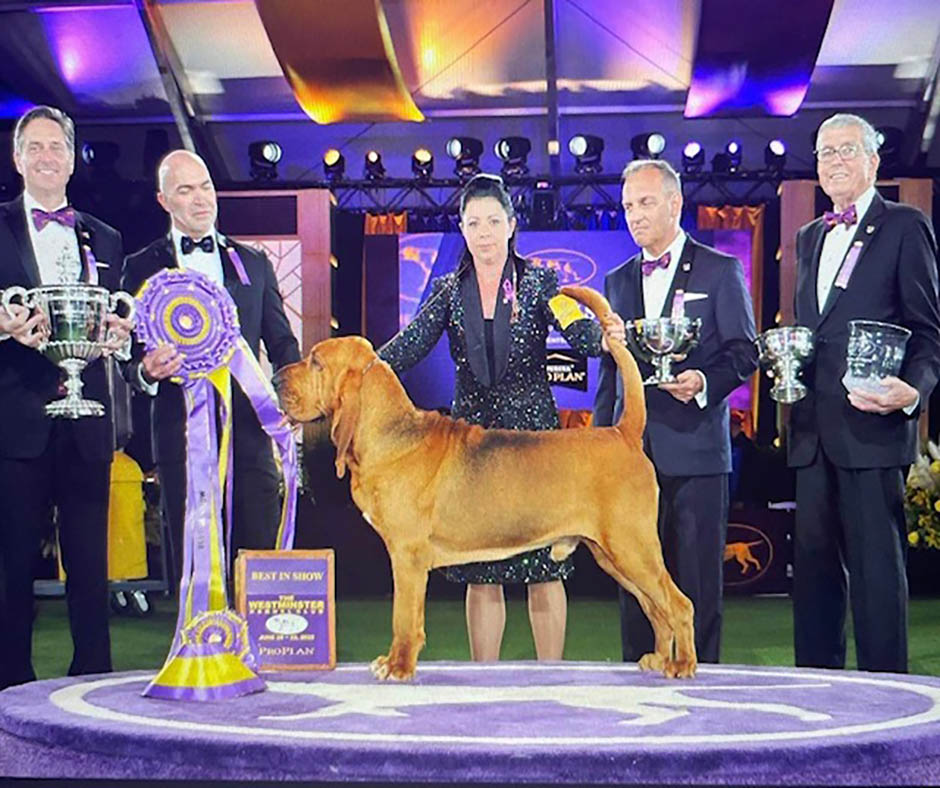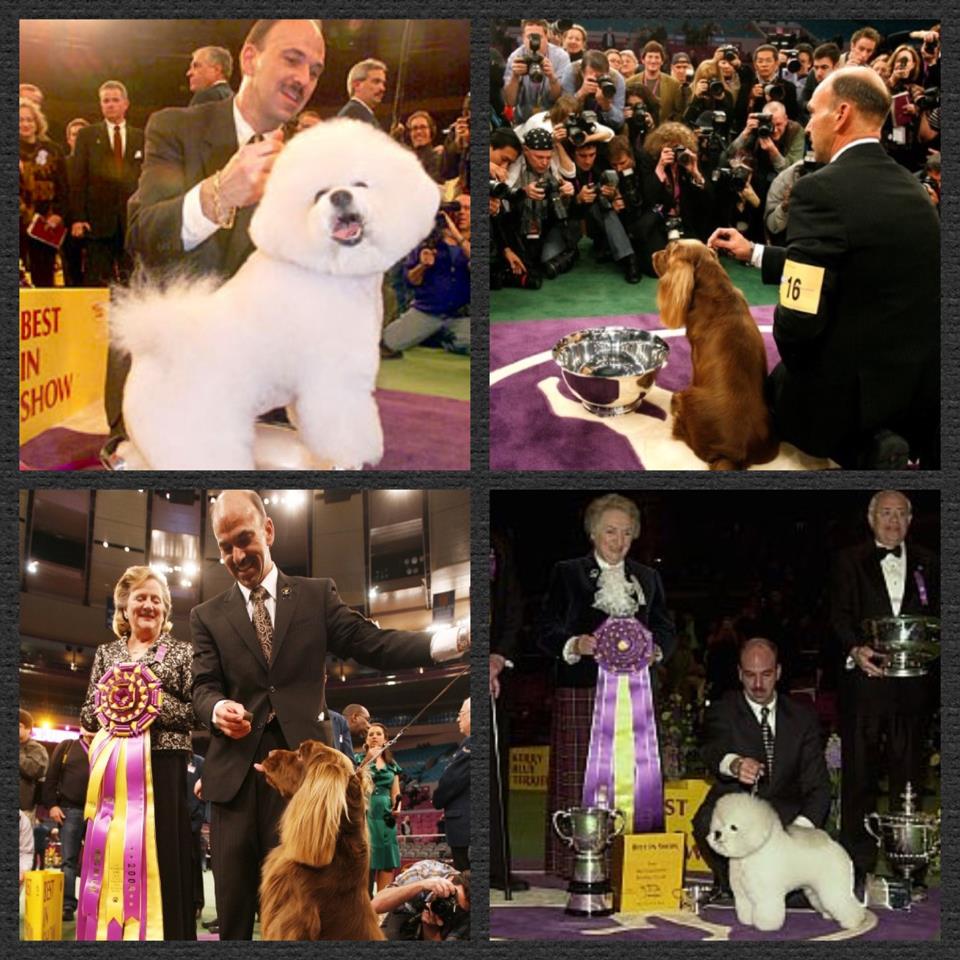638 – Juniors’ Best Advice: Always Strive to Improve
Juniors’ Best Advice: Always Strive to Improve
Octavia Stensen, Best Junior at Westminster Kennel Club this year, joins host Laura Reeves for the behind the scenes story of how a non-dog show kid just capped off the triple crown of junior showmanship, having also won Best Junior at the AKC National Championship and made finals in Juniors at Crufts.
Stensen’s family acquired a Norwegian Buhund when she was 10 years old. Her first time in the ring left her in tears, but she persevered and nine years later she reached the pinnacle of the sport for juniors.
“We ended up getting Fiona and she became our new pet but the one catch of it was that we had to get her grand champion,” Stensen said. “I was like, ‘I’ll do it. I don’t even know what that means but I will do it. I don’t even know what this entails or what I’m doing in this, but I am going to do it.’ And so it started from there and it wasn’t easy by any means.
“I went to bed that night (after my first ring experience) thinking, I can do better and I can do better here and I could have done this and I’m gonna do that next time,” Stensen said. “And there was a next time, you know what I mean? There was like that idea of the future.
“I did eventually get her Grand and she is now our pet and we have since then bred her and got my heart dog out of that, Pineapple.

Octavia Stensen with her mom and Pineapple after the WKC Best Junior win.
“I am so, so lucky both my mom and my dad have been so supportive, but my mom really steps up. My dad is like, I’ll pay the bills, but my mom is like, I’m going to be here next to you and I’m going to travel with you to all of these things and I couldn’t be more grateful for that.
“They have definitely supported me in more ways than I could have ever, ever asked for. I mean, after winning at Orlando and walking out of the ring and then being like, so I guess I need to go to London now. And they were like, ‘okay, so let’s figure out how we’re going to finance that.’
Stensen’s advice to juniors coming up is always have fun and never stop improving.
“It is so, so hard to get caught up in the competition and freaking yourself out and getting all nervous but this is meant to be fun. It’s all for fun. We are coming to these things to have a good time, we’re not coming to these things to torture ourselves with nerves. Listen to your mentors and your peers and you can always be better. You can consistently improve. I mean, there’s never a moment in your life where you can stop getting better at things.”
634 – Best Advice from Best in Show Judge, Roz Kramer
Best Advice from Best in Show Judge, Roz Kramer
Roz Kramer, Best in Show judge for Westminster Kennel Club last week, joins host Laura Reeves with advice, stories, suggestions and tips for all exhibitors.
On judging Best in Show at Westminster
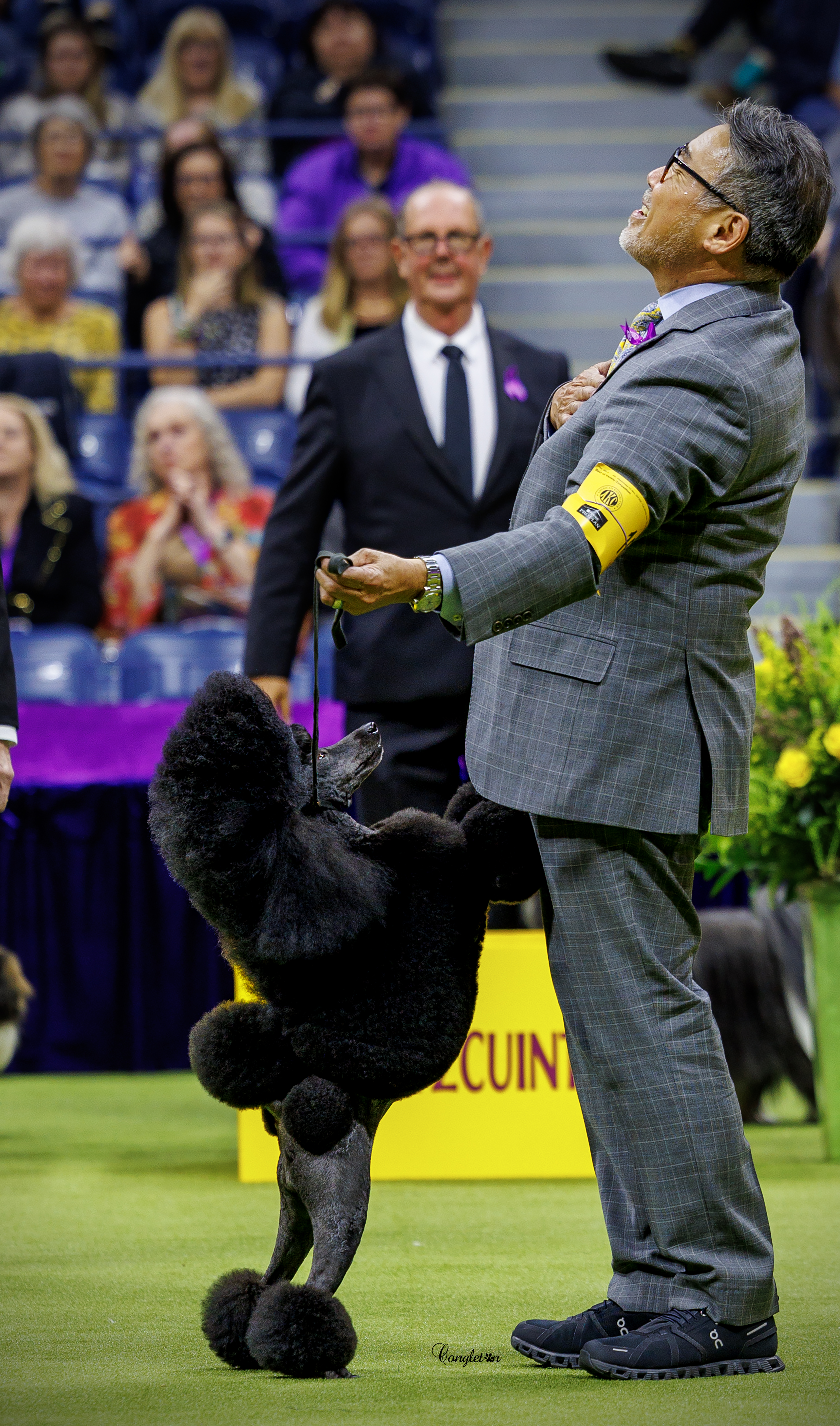
Kaz Hosaka, winning BIS at WKC with the Miniature Poodle, Sage.
“You know, you’re sequestered and so you don’t really know who you’re getting and they come in the ring one at a time and it was one gorgeous dog after another.
“I mean, all of them showed like a million bucks. They all looked wonderful, fabulous condition. And it gave me goosebumps. It really did. I was so happy and so thrilled.
On her mentors
“I have had three incredible mentors for me Annie (Rogers Clark), Janey and Bob (Forsyth). I had so much respect for the three of them. Annie, she was such a teacher in many ways. I never worked for any of them, but you saw them at shows all the time and they’d give you little hints or little suggestions all the time and or you’d just sit and listen to them and you’d learn.
On how newer exhibitors can succeed
“You should stick around (after showing in the ring), learn your history of your breed, learn who the greats of the breed were, learn your pedigrees, figure out who the best multiple breeders of your breed, and it wouldn’t matter if they’re ones on the west coast and ones in Texas and ones in Maine. Seek those people out, learn the best you can. And then if you get a dog, don’t be afraid to go, not just ask other breeders for help on trimming or showing.
“I’m telling you, you go to most of these handlers, it doesn’t matter who they are, they are more than willing to help. We need the new people in the sport and everybody knows it and I think that what people also need to do is don’t think that you’re better than everybody else, be kind and caring to people because you know something, we all have to ask for help at some point in our lives and don’t be afraid to.
“You know one of the ways that I learned when I was a kid is my mentor on the Scotty’s John Sheehan. He’d trim the show side and then he’d say ‘okay now you trim the other side. Copy that.’
“(There) is the conditioning part. And it was a teaching tool to me that you do this day after day, hour after hour, and don’t stop. And it’s going to pay off.
“It’s artistry, and I think people prefer the quick fix and the easy fix. I think that people should give themselves a challenge, prove what they can accomplish and they might be surprised.”
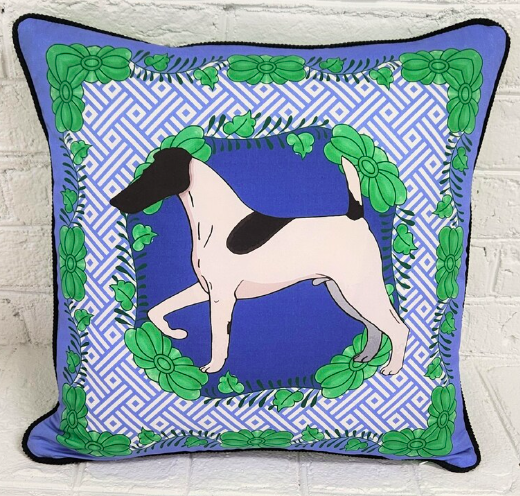
Kramer’s Etsy shop features home decor and fashion items like this pillow cover.
Visit Kramer’s Etsy shop to see her beautiful breed specific designs on home decor and fashion items.
633 – The New Voice of Westminster Kennel Club
The New Voice of Westminster Kennel Club
Host Laura Reeves is joined by Valerie Nunes-Atkinson, handler, breeder and the new color commentator at Westminster Kennel Club.
“So I think one of the reasons why I’ve been brought in is because of some of the things that you mentioned, being a handler, having lived it and been there. So I’m hoping to bring the insight from that perspective, from the handler’s perspective, the excitement of it, what goes on a little bit behind the scenes, but then also from a breeder perspective, you know, having bred dogs that have done well there and bred dogs for decades.
“Jason has been a breeder and a handler and a judge, but he’s more from the judge’s perspective and the historical importance of the breeds and details of the breeds. And I hope to bring a little bit of the other type of knowledge. And Chris is our fun guy that asks interesting questions.
“You learn how to listen to someone in your ears and still talk… It’s something, I will say it’s something to get used to. So they’re talking in your ear. ear and they’re counting you down. So literally we have about 20 seconds after the announcer gives all the breed details on that particular breed to make a point about something and keep it somewhat interesting.
“Twenty seconds is a long time, but it’s really not a long time. So to be concise and get your message across and be done before he starts going into the next breed. So they’re counting you down as you’re talking and trying to make your point in these 20 seconds and you have to be done by the time they get to one. Otherwise, someone might be screaming in your ear.
“So learning that and learning how to go back and forth between the three of us and not step on each other, so that you’re not talking over the other person.
“There’s a huge learning curve and we’ll see because, you know, it basically scares the, you know, what out of me to be doing this. And I really considered not doing it. But my dad always told me, and this was before he passed, he said, ‘If you’re not doing something that is scary and challenges you and really scares you, you’re not growing.’ So you’ve got to live your life. You’ve got to push yourself and reach for other goals. And so I’m doing it.
“And that’s where I think, you know, through this broadcast and through Jason and Chris, I mean, we hope to, you know, give breed details. We hope to give breed information to the general public. That’ll be interesting that maybe allows them to think about other breeds and hopefully maybe even learn how to find a preservation breeder.
“I think being able to, for my role, step in and maybe tell some little tidbits of stories or experiences that I’ve had that might bring other people in to say, ‘Hey, maybe I could try that or that sounds fun.’ Or maybe they don’t even know about things we’re talking about like the agility. trial that’s gonna be there as well. There’s other sports within AKC that the general public can do wth their dogs, which is very exciting. And I think it’s a way to bring everybody else, the general public into a scene, what else you can do with your dogs?”
625 – What to Do at WKC from the Queen of Queens
What to Do at WKC from the Queen of Queens
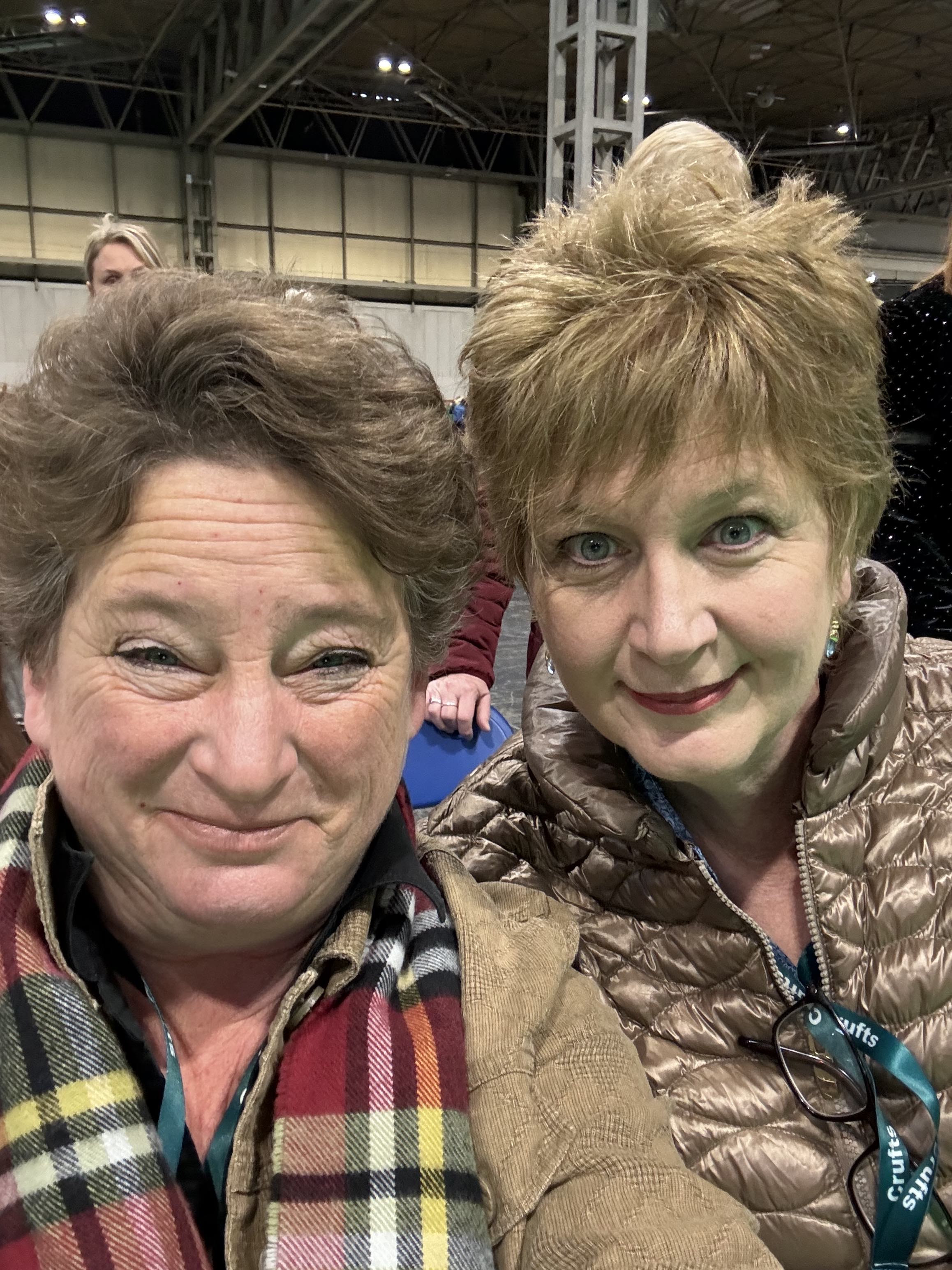
Host Laura Reeves and Denise Flaim at Crufts ’24.
Denise Flaim, lifelong resident of Queens, joins host Laura Reeves with a personal guided tour of what to do while at Westminster Kennel Club, slated for May 11, 13-14 at the USTA Billie Jean King National Tennis Center in Queens.
“Queens is not like Manhattan, first of all,” Flaim said. “Queens scares people, I think because like all the boroughs, it’s not laid out in a grid pattern …. OK, so there are street names, the streets curve and all this. Well, you know, New York is the city of neighborhoods. And if you know the neighborhood, you can find your way around. So I’m going to give you a couple of neighborhoods to go to.
“Let me preface this by saying don’t drive anywhere people. OK? First of all, you’re not going to find parking. Second of all, you have a 37% chance of being involved in an incident of road rage… And then you’ve got to know how to parallel park…. So take an Uber. They’re everywhere.

The Parkside in Queens is a historic Italian restaurant.
“First of all, you’ve got the Parkside restaurant, OK? Parkside Restaurant is probably one of the few remaining white tablecloth, red sauce, old Italian restaurants. It’s phenomenal. You go in there, you order a glass of wine or carafe of wine and you get your eggplant parm. And it’s going to be very New York. It’s going to be lots of neighborhood guys. It’s going to be a typical New York City Italian restaurant. The likes of which has basically been eradicated off the face of the earth. But this is the real deal.
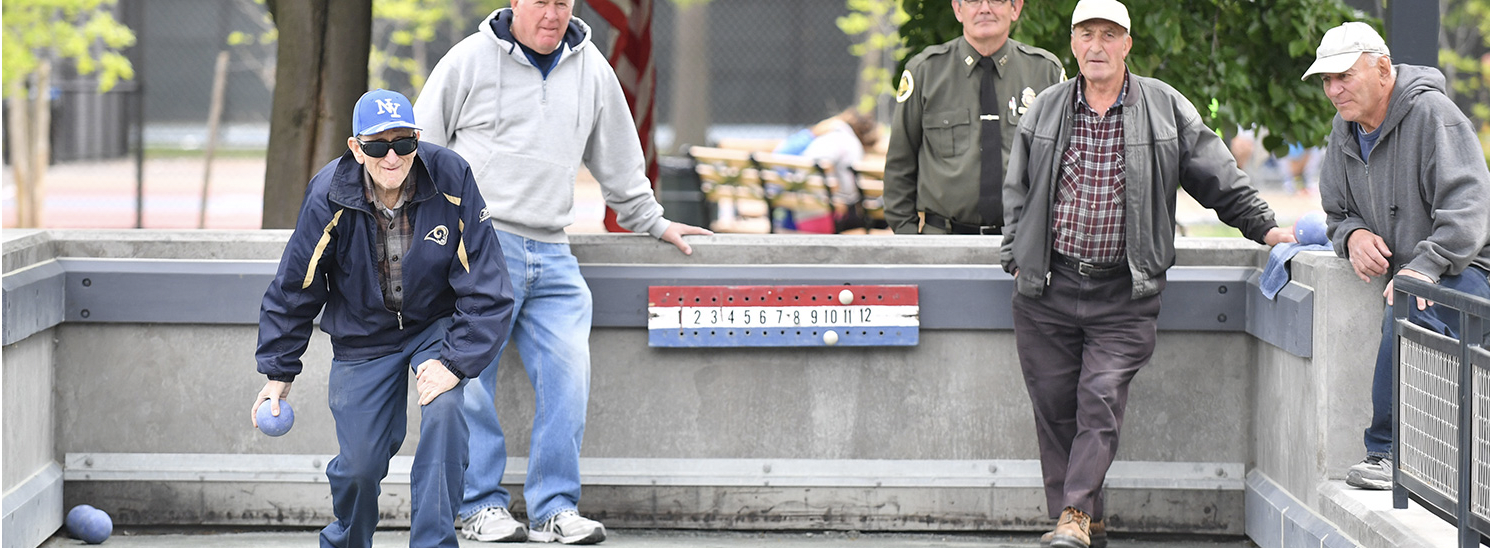
Bocce games in Spaghetti Park are quintessential New York.
“After you have your amazing meal at the Parkside, you’re going to go one block to the Lemon Ice King of Corona, from which that television show got its name, and apparently it’s been featured on The King of Queens or whatever. You’re going to order. You don’t have to just have a lemon ice. You could have a spumoni ice. You can have a chocolate ice. It goes on forever and ever. Pistachio, my personal favorite. Then you’re gonna take your ice …. and you’re going to go across the street to what is called Spaghetti Park. In the right weather, you will find the Bocce courts above, with septuagenarian and octogenarian Italian men in their slouchy sweaters and their caps playing Bocce. You will then not disturb the bocce play just because that’s not going to end well. You’re not going to ask to play, but you’re going to watch because really, that, is New York.
“Now for something completely different. Flushing, Queens. You can go to Chinatown in Manhattan. But just as amazing is the Chinatown in Flushing, Queens. And I want you to go to a place called the New World Mall … on your right you’re going to see this Asian supermarket that’s got everything. I don’t want you to be distracted by the supermarket. You can get that on the way up. I want you to go down the escalator. To the subterranean food court that has every (food) you could possibly want, every cuisine.
“It has Chinese, Japanese, Thai, Vietnamese, Taiwanese. You name it, it’s there. You can get pho. You can eat bullfrog. There are all the amazing Chinese aunties making hand done dumplings, hand rolled. Bubble tea, the whole thing. OK? It is amazing. You would never know that it is there. But I think it’s well worth an excursion.
Listen to the full episode to hear more of Denise’s personal guided tour of Queens.
620 – WKC Inside Scoop with Don Sturz, Tell YOUR Stories
WKC Inside Scoop with Don Sturz, Tell YOUR Stories
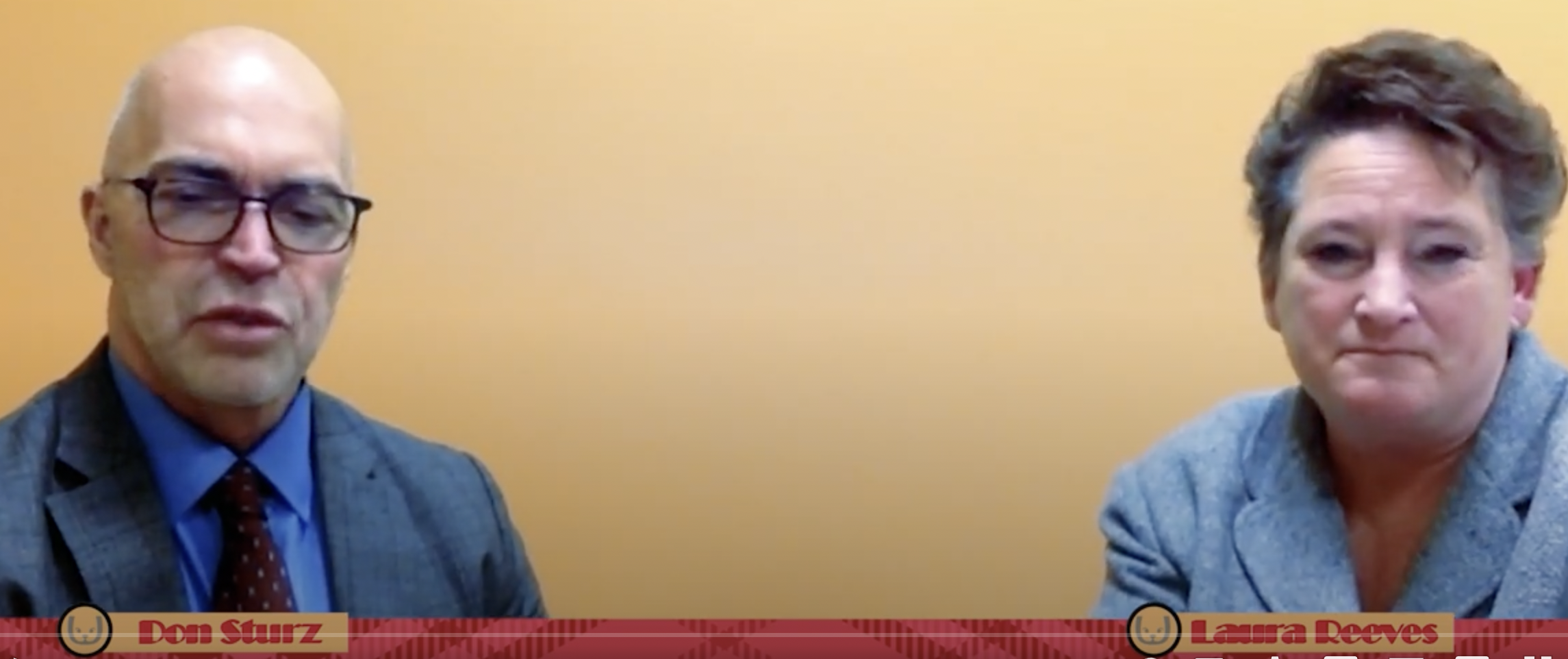
Don Sturz and host Laura Reeves sit down at the Rose City Classic to discuss the 2024 Westminster Kennel Club dog show and plans for the future.
Dr. Donald Sturz joins host Laura Reeves to discuss this year’s Westminster Kennel Club dog show at the Billie Jean King Tennis Center in Queens, NY and plans for the future.
This year the club will celebrate the 90th anniversary of Junior Showmanship, Sturz noted, while the show is dedicated to the memory of Dave Helming. Sturz describes the search for new turf, new bracing over the courts for the outdoor rings, a gelato stand, an outdoor bar and new ticketing resources for evening events.
“We want to be respectful and pay homage to the history and the tradition of Westminster, but at the same time, attempt to move forward and remain relevant,” Sturz said. “Always keeping the experience for the dogs and the exhibitors as the priority. And it’s not always easy to juggle that.
“Will we ever be back in Madison Square Garden? That’s what you all want to know. Everybody wants to know, will we ever go back to the Garden?
“Okay, so my standard answer has been for the past year, never say never. Remember, I grew up in this. I showed at Westminster for the first time when I was 10 years old … I’ve moved to calling it Westminster because we’re not calling it the Garden … so I’d like to get back to being able to say “the Garden” so it is something that we’re working on.
“The fact of the matter is Madison Square Garden was remodeled and when they did that remodeling it’s what took away all that space. So there’s no way to have a daytime event. So that’s how we ended up with the Piers. So then that thing called covid hit and during that time Pier 92 fell into the water … so that’s gone. Pier 94 is actually being remodeled and will no longer be an exhibition space. It’s going to be smaller spaces for individual businesses and so on.
“So the Piers are off the table. (We) really basically looked at every possible venue in New York City or the metropolitan area. You know, we went to Newark … we had to exhaust everything, right? We also went a little further out into Queens, to the Nassau border and looked at an arena there. And all of these, we kind of looked at it from a space point of view, like, how would it work, right? In Manhattan itself, it’s very limited as to what venues… like, there’s really only one.
“We’re going to be in one of those kinds of venues that’s going to, hopefully, afford us the opportunity to then be back at Madison Square Garden in the evening. So, watch for that.
“The plan is to try to find something for ‘25 that is also ‘26 because we just need to stop moving. We need our home.
“There’s lots of fabulous events in our sport, but there is nothing in the world like Westminster. There’s something magical about that event. That’s something that we consistently commit ourselves to is the Westminster experience, right? Creating that magic.
“So. I think Westminster is in a really great place. I think it’s a pivotal moment for Westminster.”
539 – Dr. Donald Sturz, Dog Show Philosopher & WKC BIS Judge
Dr. Donald Sturz, Dog Show Philosopher & WKC BIS Judge
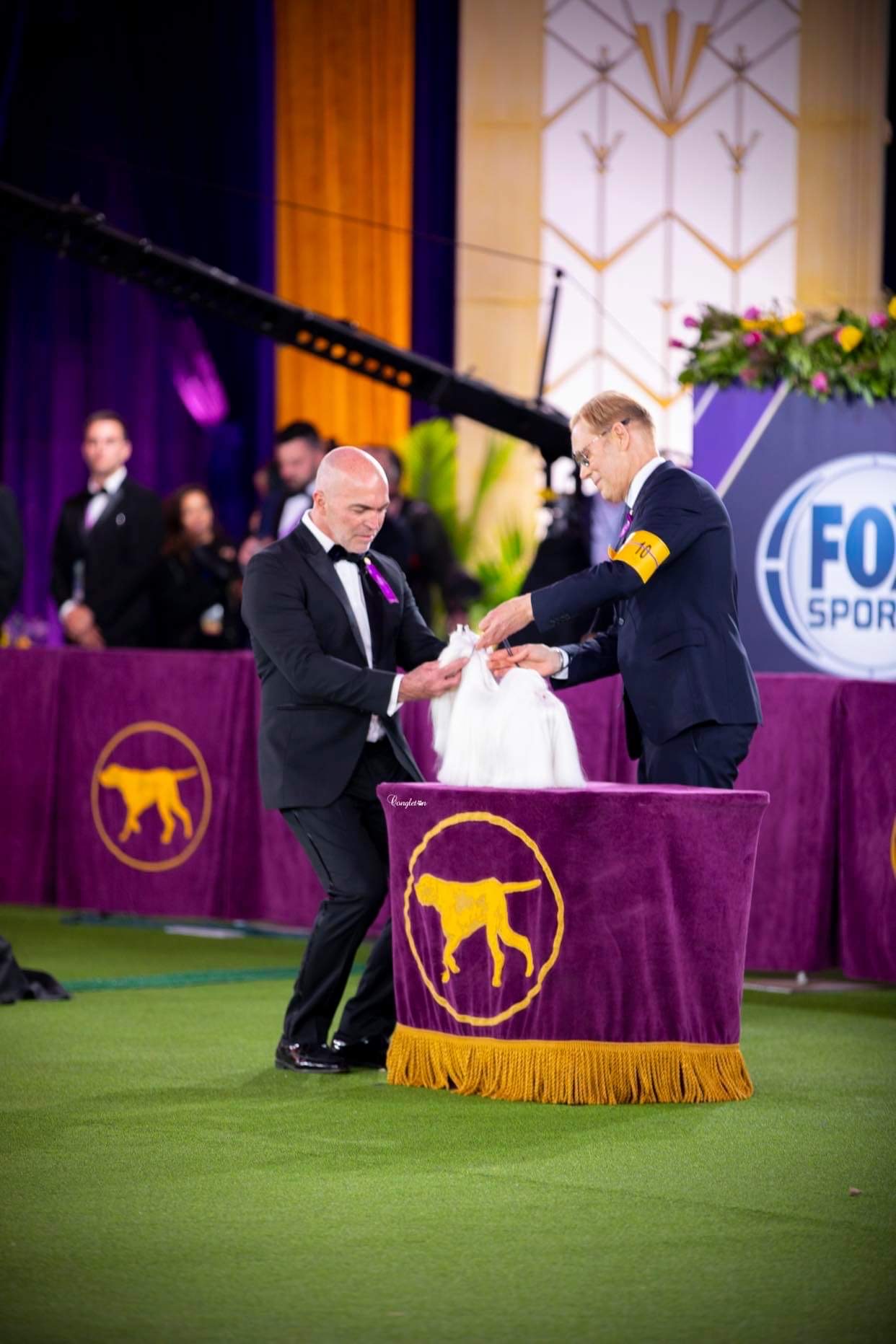 Dr. Donald Sturz, 2022 BIS judge at Westminster Kennel Club, joins host Laura Reeves to talk purebred dogs as history and art. And goosebumps at seven contenders in a unique and powerful lineup.
Dr. Donald Sturz, 2022 BIS judge at Westminster Kennel Club, joins host Laura Reeves to talk purebred dogs as history and art. And goosebumps at seven contenders in a unique and powerful lineup.
“From a historical perspective,” Sturz said, “I think it’s so important that we keep our focus on the history of particular breeds, not just from the point of view of the climate or where they came from, the terrain that they worked on or jobs that would to do, but also how the breed has evolved over time and understanding the difference between the evolution of a breed versus the changing of a breed.
“I think those are two very different things and so I think having a historical perspective, I was gonna say as a judge, but also as a breeder, I think that that informs your decisions, it informs your perception of the dogs that you’re looking at when you put them in that historical context of both where they originated, but what they were meant to do and how they’ve evolved over time.
Purebred dogs are history and they are art
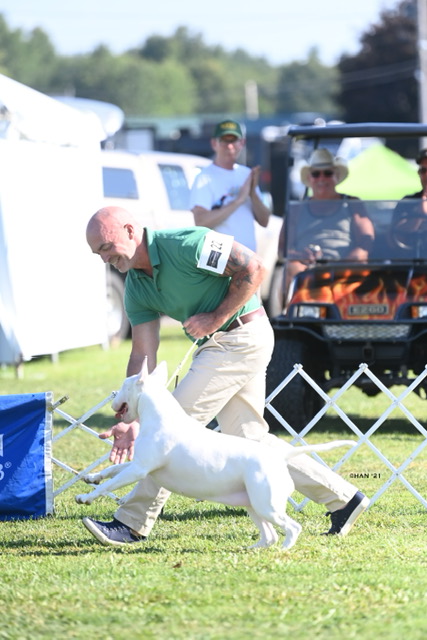 “When you talk about dogs as art, that really resonates with me, because that’s what it’s like to me when I go to a dog show. I look at dogs as I would look at art in a museum. I love when something moves me. You know how when you look at a beautiful piece of art, whether it’s a painting or sculpture or whatever, and you just have a visceral emotional reaction. I love when that happens for me with a dog. As a judge it doesn’t happen all the time, it doesn’t happen as frequently as one might like, but when it does happen, it’s kind of like the reinforcer.
“When you talk about dogs as art, that really resonates with me, because that’s what it’s like to me when I go to a dog show. I look at dogs as I would look at art in a museum. I love when something moves me. You know how when you look at a beautiful piece of art, whether it’s a painting or sculpture or whatever, and you just have a visceral emotional reaction. I love when that happens for me with a dog. As a judge it doesn’t happen all the time, it doesn’t happen as frequently as one might like, but when it does happen, it’s kind of like the reinforcer.
Patience is a virtue
“People have gotten so caught up in immediate gratification and looking for the outcome rather than the process. I think it’s important for us, especially in dogs, to kind of catch ourselves. If we find ourselves in that kind of moment, I’ll say wait a minute, slowdown skippy, you know there’s a bigger picture and a much longer story and you need to keep reminding yourself of that.
“I’m big on there being gray areas. I can allow for some stylistic differences on the continuum. But there’s a point, there’s a line where you get, that’s too much, that’s too far. It’s either too moderate or too extreme. I have a little wiggle room on both sides of that, so that’s how I would process kind of that global perspective piece.
“Being able to kind of see the forest for the trees and be able to, as a breeder, see how that dog can add to your journey as you pursue your vision of the breed. I think also being able to think in a more long-term way.
“I think the mistake, unfortunately, is people are like ‘oh, I’m gonna breed to this dog from wherever and I’m gonna bring in these qualities’ and then they have a litter and it’s like ‘oh I didn’t get what I wanted.’ You’re probably not gonna get what you want. You have to keep working and building and choosing and selecting. It’s a longer term process when one tries to do something like that. Does it sometimes click? Yeah, it sometimes happens. But I think that’s unusual. You have to kind of make a commitment to a few generations out, at least, to see what you were trying to get to.
Deciding in the moment
“What was so beautiful was that his breeder owner handler just very calmly stepped out there and guided him very deftly into a natural stance. He just planted his four feet perfectly without any the crossover thing … it was just boom boom boom. And then he just stood there and he literally stared at me. I’m like ‘Oh my God this is a really proud dog. This is a dog who’s giving me a dog standing over a lot of ground, a dog of power and strength. And then I sent him around and his gait was just flawless… Powerful and covering ground and elasticity. Head and tail carriage… and it was perfection to me. In that moment, it was like ‘there it is.’”
443 – A Summertime Garden Party with Westminster KC
A Summertime Garden Party
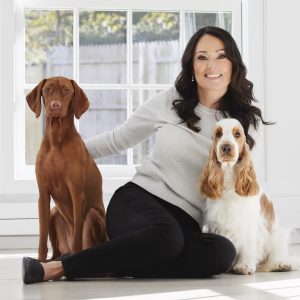 Gail Miller Bisher, Westminster Kennel Club Director of Communications, joins host Laura Reeves to fill in some of the “behind the scenes” details on the unprecedented summertime events for the iconic club.
Gail Miller Bisher, Westminster Kennel Club Director of Communications, joins host Laura Reeves to fill in some of the “behind the scenes” details on the unprecedented summertime events for the iconic club.
“First of all, we are so grateful that we actually got our 2020 show in under the wire,” Miller Bisher said. “If we look back, (it seems) pretty unbelievable that we had the entry and everyone there under one roof. We were really fortunate. We understand that. Then in March, of course, everything changed. At that point our (club) president rallied the troops and said basically we have to look at all scenarios.
“We got organized. We had different committees. Even though we’re a very small organization, we still broke it out into groups that would then investigate all the different scenarios. By that we mean is it something where there is no show? What do we do if there’s no dog show? What do we do if it’s a much reduced number of entries? What do we do if there’s no spectators? So, basically this summer has been an exercise in looking all those different options because no one knew what was going to happen.
“The mandate was, ‘let’s figure it out, so we’re ready to go once we do know.’ So it’s been a very busy summer for everyone at Westminster… one of the scenarios, of course, was postponing the show, which is something that many large sporting events were doing. The Kentucky Derby and several others went that route.
“Because we are partners with Madison Square Garden, we have such a history with them, we were also having to monitor what their plans are. So there are a lot of moving parts to figure out. Westminster’s board has put a huge emphasis on safety. They are making sure that the exhibitors and the judges and, if there are spectators, are safe. And, of course, the dogs. That was really the primary driver of postponing.
Miller Bisher said the club members are thrilled with the solution they landed on. The show is moving the 2021 events to the historic Lyndhurst Estate in Tarrytown, NY.
Westchester County Kennel Club held its shows on these grounds for about 30 years, Miller Bisher noted. Which means “that the people that run the facility and the grounds are very familiar with dog shows. They are dog show friendly and they understand the basics of how it works so that makes it a little easier transition.”
The basics
“This is going to be a year like no other,” Miller Bisher said. “So a couple of the basics are that we are retaining our entry limit of 2500 dogs. It’s going to be an all champion show again. We’re not having spectators, or at least that’s what we think now. I mean hopefully by June things will be different and having spectators, we would welcome that. But for planning purposes, we kind of have to look at what’s the situation today and plan according to that.
“With that in mind, there will be no benching. People will be grooming at their vehicles and there will be a grooming tent available. I am very proud of the fact that we’re one of the last few bench shows in the country and the fact that it is such an educational aspect of the dog show for spectators to be able to find the breeds and learn about them.
“Obedience is happening. We have an entry limit of 25 dogs and it’s going to be the same as last year. The agility championship is the same as well, with 330 dogs (competing.) This is really exciting news. The finals will be airing on big Fox as we call it. Groups on the second night and best in show will also be airing live on big Fox primetime Sunday.”
Warm weather and Sleepy Hollow
Miller Bisher encourages attendees to come prepared for what could be warm weather at the outdoor venue. While the club will be tenting rings, the weather is expected to be drastically different than February in Manhattan.
She added that the historic region where the show is being held was the setting for Ichabod Crane and the “Legend of Sleepy Hollow,” providing a variety of new tourist opportunities. Additional note, lodging prices are much lower than in the City, although those in close proximity are not numerous.
For more information about oversize vehicle parking, qualifying requirements, location and more, go to the WKC website or follow these links.
364 – Healthy, Happy Travels to Westminster Kennel Club
Healthy, Happy Travels to Westminster Kennel Club
Dr. Marty Greer provides thorough and thoughtful advice for keeping your dog healthy and happy on the way and at the big show.
Preparing the Dog
- Enter the dog.
- Assure the entry has been accepted.
- Arrange travel.
- Have an appropriate travel bag or crate, depending on if the dog will travel in the cabin under your seat or in cargo, with or without you on the airplane.
- Do NOT try to pass the dog off as an “ESA” – Emotional Support Animal if this dog is not certified as such. There is current proposed legislation that will restrict the use of this term as it has been overused and misused by many travelers.
- A Certificate of Veterinary Inspection (CVI) is required for all animals crossing state lines. This applies whether you are driving or flying the dog to the destination. Most of the time, you will not be asked for this document. However, if you are without it, your travel plans may be interrupted. This must be issued by a veterinarian who is “Accredited” by USDA. Not all Veterinarians are accredited so be sure you have a veterinarian who can sign this paperwork.
- A current rabies certificate is also required for all dogs traveling.
- A “Letter of Acclimation” if the dog is flying in cargo. This will reflect the temperatures the dog has been acclimated to prior to travel. This is issued by your veterinarian.
- Microchip and identification collar with your current cell phone number.
- Anti-anxiety medication if indicated. Acepromazine and Benadryl/diphenhydramine are NOT anti-anxiety medications. Alprazolam, trazodone, or gabapentin may be suitable if indicated and prescribed by your veterinarian.
Preparing the Equipment
- Make a list of the least amount of equipment and supplies you can manage with. Consider shipping these ahead to the hotel.
- Arrange to rent equipment
- Travel bag, leash and collar. A quiet toy to keep your dog busy and avoid annoying fellow travelers.
- Travel crate, absorbent material, leash, collar, ID, small bag of food enough for one meal, bowls (the kind that flatten are easiest) and a toy to keep your dog busy.
Preparing you!
- Buy tickets for admission to Westminster.
- Make flight arrangements. Be sure you include the dog(s) on the reservation.
- Make hotel reservations. Be sure you include the dog(s) on the reservation.
353 – Scott Sommer 2: Money in Dog Shows and Setting Goals
Scott Sommer part 2: Money in Dog Shows and Setting Goals
Scott Sommer, one of only a handful of people to show multiple dogs to Best in Show at Westminster Kennel Club, joins host Laura Reeves in part two of this conversation for a deep dive on a tricky topic — money. How to get it, how to spend it and how much it matters.
Sommer also shares his view of the difference between a “good” dog and a “great” dog. For him, it’s all about the dog’s “heart.” He describes the iconic Bichon Frise, JR, Ch. Special Times Just Right, as having a “heart of a lion.”
“Sometimes the dog with heart will beat a dog that is *technically* better simply because it will always perform, no matter the conditions,” Sommer said.
The back story on how Sommer acquired JR for his client, Cecelia Ruggles, and worked with JR’s owners, Eleanor McDonald and Flavio Werneck, is absolutely a testament to the power of determination.
“Flavio wanted me to have the dog,” Sommer said. “I called Cel every day for a month. Finally, I told her, ‘I don’t care who shows that other dog, it will beat this other dog we have every time,’” Sommer recalls. Next thing he knew, he was meeting Eleanor at the Houston airport with JR in a Sherpa bag and “shouting with joy.”
Campaigning a show dog, at any level, requires a plan, Sommer said. Whether your goal is to achieve number one status in your breed or number one all-breeds in the country, the steps are the same.
Have a goal
Every dog is different. A dog with breed type, soundness and heart is that once in a lifetime goal for all of us. Learn to be critical of your dog and know its strengths and weaknesses. Plan accordingly.
Create and stick to a sensible plan for the dog’s career. Know your budget, know your time and know your limits.
Take a listen to our previous episode where we take a deeper dive into how to make these decisions.
352 – Scott Sommer: Work Hard and Never Stop Trying
Scott Sommer: Work Hard and Never Stop Trying
Scott Sommer, one of only a handful of people to show multiple dogs to Best in Show at Westminster Kennel Club, offers his best advice for success.
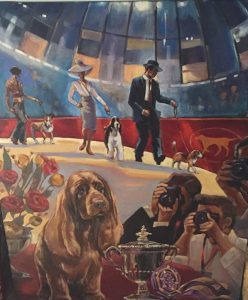 Both JR, the Bichon Frise and Stump, the Sussex Spaniel were surprise, dark horse winners at the Garden in their respective years. JR won under Dorothy MacDonald, defeating Mick, the incomparable Kerry Blue Terrier, handled by Bill McFadden, in a match up of Titans in the dog world. Stump was the oldest dog to win the coveted award. He came out of retirement to celebrate surviving a nearly tragic illness, winning under Sari Tietjen, the roar of the Madison Square Garden crowd ringing in Sommer’s ears.
Both JR, the Bichon Frise and Stump, the Sussex Spaniel were surprise, dark horse winners at the Garden in their respective years. JR won under Dorothy MacDonald, defeating Mick, the incomparable Kerry Blue Terrier, handled by Bill McFadden, in a match up of Titans in the dog world. Stump was the oldest dog to win the coveted award. He came out of retirement to celebrate surviving a nearly tragic illness, winning under Sari Tietjen, the roar of the Madison Square Garden crowd ringing in Sommer’s ears.
Sommer’s family bred smooth fox terriers. In fact, his mother sold legendary dog man Bobby Fisher his first show dog. Sommer showed his first dog at five years old and was hooked.
He later apprenticed for Bob and Jane Forsyth. On his 16th birthday, Sommer moved to Houston and went to work for Michael Kemp.
Best advice
His best advice? “Work hard and never stop trying. This is not something you can learn overnight. Work for it and you will get rewarded.”
“I think the initial steps are taking care of the dogs, cleaning them, feeding them, from there go forward,” Sommer said.
Top dogs
JR was the Number One ranked dog in country in 2001. But Sommer said he’d never shown the dog to MacDonald before that Best in Show lineup.
“How she decided between JR & Mick I’ll never know,” Sommer said. “I fully expected the Kerry to win. When she said ‘Bichon,’ I just ran…
“JR was a great show dog. He just never let down. It could be hot, cold, wet, it didn’t matter. He was so dependable. When you show a dog at that level that is so important,” Sommer added.
Both JR and Stump lived out their lives with Sommer. They were inseparable best friends and died a week apart.
Run!
Sommer’s best recommendations for the Garden include making sure large breed dogs have boots so the salt on the streets doesn’t hurt their feet.
“Go in with all the confidence in the world, hope and pray, and do the best job you can,” Sommer said. “If (the judge) points at you, RUN!


